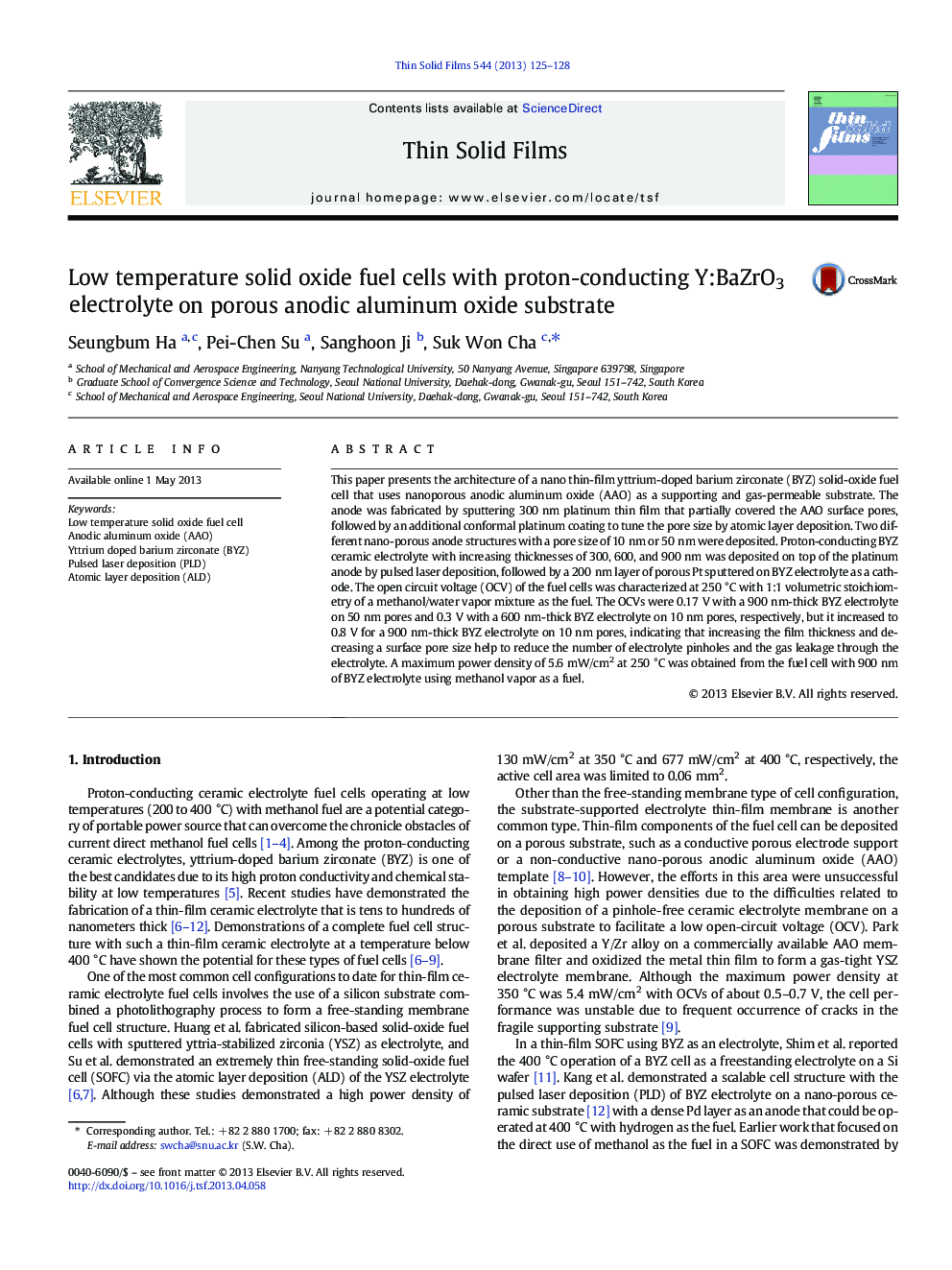| کد مقاله | کد نشریه | سال انتشار | مقاله انگلیسی | نسخه تمام متن |
|---|---|---|---|---|
| 1665966 | 1518060 | 2013 | 4 صفحه PDF | دانلود رایگان |

• A low temperature ceramic fuel cell on nano-porous substrate was demonstrated.
• A thin-film yttrium doped barium zirconate (BYZ) was deposited as an electrolyte.
• An open circuit voltage (OCV) was measured to verify the BYZ film quality.
• An OCV increased by increasing BYZ film thickness and decreasing pore size of anode.
• The current–voltage performance was measured using vaporized methanol fuel at 250 °C.
This paper presents the architecture of a nano thin-film yttrium-doped barium zirconate (BYZ) solid-oxide fuel cell that uses nanoporous anodic aluminum oxide (AAO) as a supporting and gas-permeable substrate. The anode was fabricated by sputtering 300 nm platinum thin film that partially covered the AAO surface pores, followed by an additional conformal platinum coating to tune the pore size by atomic layer deposition. Two different nano-porous anode structures with a pore size of 10 nm or 50 nm were deposited. Proton-conducting BYZ ceramic electrolyte with increasing thicknesses of 300, 600, and 900 nm was deposited on top of the platinum anode by pulsed laser deposition, followed by a 200 nm layer of porous Pt sputtered on BYZ electrolyte as a cathode. The open circuit voltage (OCV) of the fuel cells was characterized at 250 °C with 1:1 volumetric stoichiometry of a methanol/water vapor mixture as the fuel. The OCVs were 0.17 V with a 900 nm-thick BYZ electrolyte on 50 nm pores and 0.3 V with a 600 nm-thick BYZ electrolyte on 10 nm pores, respectively, but it increased to 0.8 V for a 900 nm-thick BYZ electrolyte on 10 nm pores, indicating that increasing the film thickness and decreasing a surface pore size help to reduce the number of electrolyte pinholes and the gas leakage through the electrolyte. A maximum power density of 5.6 mW/cm2 at 250 °C was obtained from the fuel cell with 900 nm of BYZ electrolyte using methanol vapor as a fuel.
Journal: Thin Solid Films - Volume 544, 1 October 2013, Pages 125–128